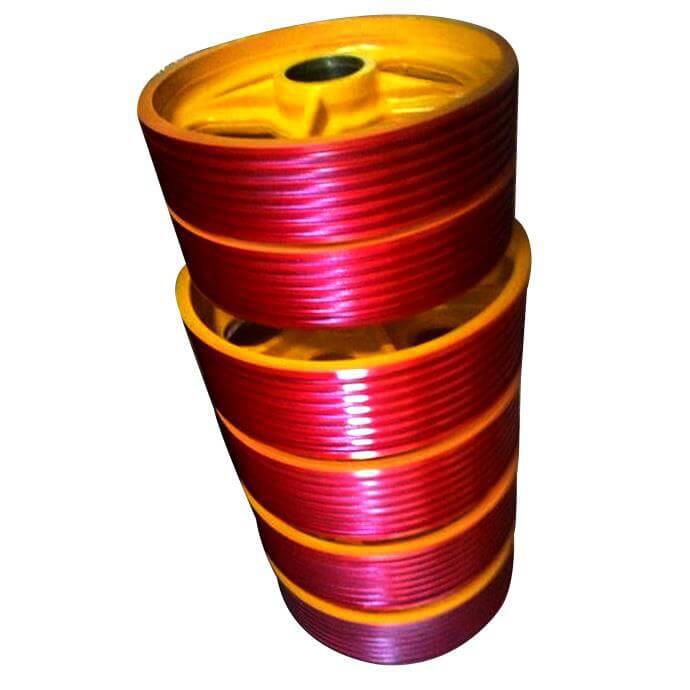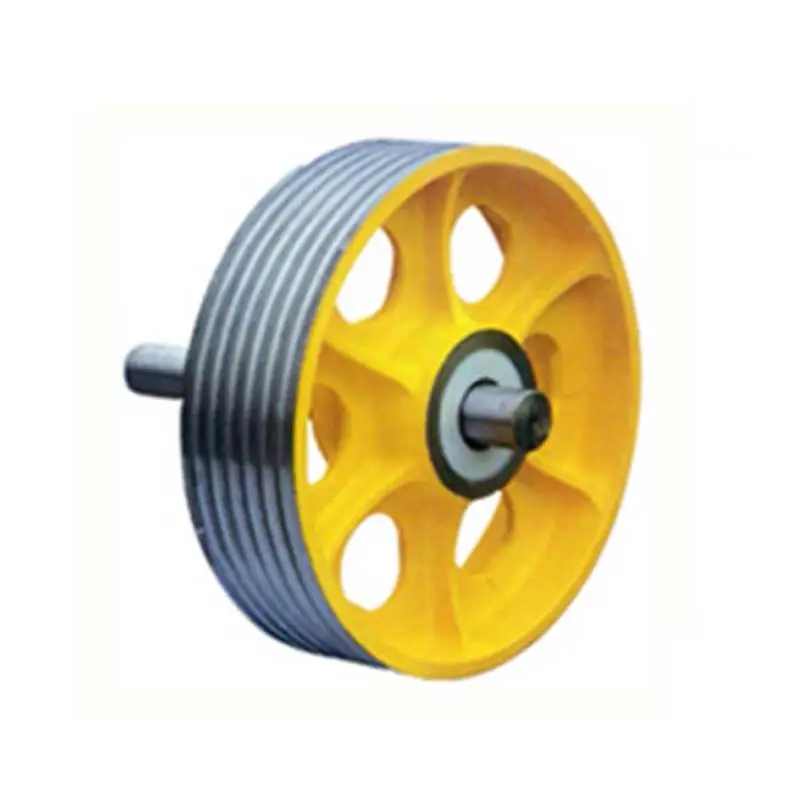Product Description
Stainless Steel SS304 Hardware Rigging wire rope rolling bearing block pulley
| Item | Wire Rope Pulley |
| Model | Single Pulley, Double Pulley |
| Size | M15-M100 |
| Material | Stainless Steel 304/316, Carbon Steel |
| Standard | DIN, ASME, BS, JIS, AS, EN, GB for option |
| Grade | A2-70, A4-80, 4.8/8.8 |
| Finish | Plain, Passivation, Polishing, Galvanized, Zinc Plated, Hot-dip Galvanized |
| Delivery Time | 3-15 days |
| OEM | Available |
Q: What’s your product range?
A: Our product cover Bolts, Screws, Nuts, Washers, Spring ,Rivet, Anchor, Pulley, Rigging and so on.
Q: How long is your delivery time?
A: 3 days for stock items,7-15 days for production.
Q: How do you control your quality.
A: QC on-line inspection and final inspection before delivery. 6S management. MTC and Quality Report can be provide.
Q: Could you provide free samples?
A: Yes, we could offer free samples for the items in stock, just need to pay shipping cost, it can be refunded to your orders.
Q: Do you accept small order?
A: Sure, we can accept small orders if we have stock of the specification which you need..
Q: What is your packing ?
A: 20-25kg for 1 carton,36 or 48 cartons for 1 pallet. One pallets is about 900-960kg. Customized carton and Customer’s logo is available.
Q: What is your payment term?
A: We can accept T/T, L/C for bulk order. Paypal and Western Union for small order or sample order.
Made-in-China Online payment is available.
Q: Do you accept customized order?
A: Yes, we can produce according to sample or drawing.
/* January 22, 2571 19:08:37 */!function(){function s(e,r){var a,o={};try{e&&e.split(“,”).forEach(function(e,t){e&&(a=e.match(/(.*?):(.*)$/))&&1
| Warranty: | 1 Year |
|---|---|
| Type: | Wire Rope Pulley |
| Material: | Stainless Steel/Carbon Steel |
| Number of sheaves: | Single Pulley, Double Pulley |
| Control: | Manual |
| Color: | Silver |
| Samples: |
US$ 0/Piece
1 Piece(Min.Order) | |
|---|
| Customization: |
Available
| Customized Request |
|---|
What is the significance of compliance with safety standards when using lifting pulleys?
Compliance with safety standards is of utmost importance when using lifting pulleys. Adhering to safety standards ensures the well-being of workers, prevents accidents, and promotes a safe working environment. Here are the key reasons why compliance with safety standards is significant:
1. Worker Safety: Safety standards provide guidelines and regulations designed to protect workers from potential hazards associated with lifting operations. Compliance with these standards helps minimize the risk of accidents, injuries, and fatalities. By following safety procedures and using lifting pulleys in accordance with established standards, workers are less likely to be exposed to dangerous situations.
2. Risk Mitigation: Safety standards are developed based on extensive research, industry best practices, and lessons learned from past incidents. They address potential risks and provide specific measures to mitigate those risks. Compliance with safety standards reduces the likelihood of equipment failure, load instability, and other hazardous situations that can lead to accidents and injuries.
3. Legal and Regulatory Compliance: Many jurisdictions have specific safety regulations and standards that must be followed in lifting operations. Compliance with these legal requirements is essential to avoid penalties, fines, and legal liabilities. It also demonstrates a commitment to responsible and ethical business practices.
4. Industry Reputation: Compliance with safety standards enhances an organization’s reputation within the industry. It demonstrates a commitment to the well-being of workers and a dedication to maintaining high safety standards. Clients, partners, and stakeholders are more likely to trust and engage with companies that prioritize safety compliance.
5. Insurance and Liability: Non-compliance with safety standards may invalidate insurance coverage or result in higher insurance premiums. Insurance providers often require organizations to demonstrate compliance with safety regulations to ensure adequate risk management. Compliance with safety standards reduces the potential for accidents and liability claims, contributing to more favorable insurance terms.
6. Continuous Improvement: Safety standards are regularly updated to incorporate new knowledge, technologies, and industry trends. Compliance with these standards encourages organizations to stay current with the latest safety practices and continuously improve their lifting operations. It fosters a culture of safety awareness and encourages proactive measures to enhance safety and prevent incidents.
7. Effective Risk Assessment: Safety standards provide guidelines for conducting comprehensive risk assessments in lifting operations. Compliance ensures that potential hazards are identified, assessed, and managed effectively. It enables organizations to implement appropriate control measures, such as selecting the right lifting pulleys, using suitable lifting techniques, and providing necessary training and personal protective equipment.
8. Worker Empowerment: Compliance with safety standards empowers workers by providing them with a safe and secure environment to carry out their tasks. It promotes a safety-conscious culture and encourages workers to actively participate in safety programs, report hazards, and suggest improvements. When workers feel valued and protected, their morale, productivity, and overall well-being are positively impacted.
By complying with safety standards when using lifting pulleys, organizations prioritize the safety and welfare of their workers, mitigate risks, ensure legal compliance, enhance their reputation, and foster a culture of safety. It is a vital aspect of responsible and efficient lifting operations.
Can lifting pulleys be used in both industrial and construction lifting equipment?
Yes, lifting pulleys can be used in both industrial and construction lifting equipment. Lifting pulleys are versatile components that play a crucial role in various lifting applications across different industries. They provide mechanical advantage, facilitate load distribution, and enable efficient lifting operations. Here’s how lifting pulleys are utilized in industrial and construction lifting equipment:
In Industrial Lifting Equipment:
Lifting pulleys are commonly employed in industrial settings for a wide range of lifting tasks. Industries such as manufacturing, warehousing, logistics, and material handling rely on lifting pulleys to move heavy loads, machinery, or materials. Some examples of industrial lifting equipment that utilize pulleys include:
1. Overhead Cranes: Overhead cranes are extensively used in industrial facilities to lift and move heavy loads horizontally. These cranes incorporate lifting pulleys and a trolley system to support the load and provide controlled movement. The pulleys in overhead cranes distribute the load weight and help in efficient load handling.
2. Gantry Cranes: Gantry cranes are similar to overhead cranes but operate on a different supporting structure. They are commonly used in construction sites, shipyards, or outdoor industrial areas. Gantry cranes utilize lifting pulleys to raise and lower heavy loads, enabling versatile lifting operations.
3. Forklifts and Lift Trucks: Forklifts and lift trucks are widely used in warehouses, distribution centers, and manufacturing facilities for material handling tasks. These vehicles often incorporate lifting pulleys in their mast systems to raise and lower loads efficiently.
4. Hoists and Winches: Hoists and winches are utilized in various industrial applications for lifting and pulling operations. They employ lifting pulleys to support the load and provide mechanical advantage, making it easier to lift heavy objects or move loads vertically or horizontally.
In Construction Lifting Equipment:
Lifting pulleys are also extensively utilized in construction lifting equipment to handle heavy loads, equipment, and materials at construction sites. Construction machinery and equipment often incorporate lifting pulleys in their design to enable efficient lifting and positioning operations. Some examples include:
1. Tower Cranes: Tower cranes are commonly seen at construction sites and are used for lifting and moving heavy materials and equipment vertically and horizontally. These cranes employ lifting pulleys in their lifting mechanisms, allowing for precise control and efficient material handling.
2. Mobile Cranes: Mobile cranes, such as truck-mounted or rough-terrain cranes, are versatile lifting equipment used in construction projects. These cranes utilize lifting pulleys in their boom systems to lift heavy loads and position them with accuracy.
3. Elevators and Lifts: In construction projects involving multi-story buildings, elevators and lifts are essential for vertical transportation. Lifting pulleys are integral components of elevator systems, facilitating smooth and controlled movement between floors.
4. Concrete Pumps: Concrete pumps are used to transport and pour concrete in construction projects. These pumps employ lifting pulleys to lift and position heavy concrete-filled hoses or booms, enabling precise pouring and placement of concrete.
Lifting pulleys are versatile components that can be customized to meet the specific requirements of industrial and construction lifting equipment. They provide mechanical advantage, load distribution, and efficient lifting capabilities in a wide range of applications. By incorporating lifting pulleys, both industrial and construction lifting equipment can operate safely and effectively, handling heavy loads and materials with ease.
What is a lifting pulley, and how is it used in various lifting applications?
A lifting pulley is a mechanical device used to change the direction of a lifting force and facilitate the lifting or lowering of heavy objects. It consists of a grooved wheel or sheave that rotates on an axle and is typically mounted on a frame or housing. Here’s an explanation of how lifting pulleys are used in various lifting applications:
1. Block and Tackle Systems: Lifting pulleys are commonly used in block and tackle systems, which utilize multiple pulleys to create a mechanical advantage. By arranging the pulleys in a specific configuration, such as a fixed pulley and a movable pulley, block and tackle systems allow users to lift heavy loads with less effort. Lifting pulleys in block and tackle systems distribute the load across multiple ropes, reducing the force required to lift the load.
2. Crane and Hoist Systems: Lifting pulleys are integral components of cranes and hoists used in construction, manufacturing, and other industries. In these systems, the pulleys are part of the lifting mechanism and are responsible for raising and lowering heavy loads. The pulleys in crane and hoist systems provide the necessary mechanical advantage to lift heavy objects safely and efficiently.
3. Elevator Systems: Elevators rely on lifting pulleys to move the elevator car up and down. The pulleys, along with the elevator cables or ropes, form the traction system that lifts and lowers the car. The pulleys in elevator systems ensure smooth and controlled movement while distributing the load evenly across the cables, allowing for safe transportation of passengers or goods.
4. Rigging and Rigging Gear: Lifting pulleys are often used in rigging applications, such as in the construction or entertainment industry. They are employed to redirect the lifting force, change the direction of the load, or create lifting configurations suitable for specific tasks. Lifting pulleys used in rigging applications are designed to withstand heavy loads and provide reliable lifting capabilities.
5. Material Handling Equipment: Lifting pulleys are utilized in various material handling equipment, including winches, come-alongs, and manual chain hoists. These devices incorporate pulleys to facilitate the lifting and transportation of heavy objects. Lifting pulleys in material handling equipment enable operators to apply force in the desired direction, making it easier to handle and move heavy loads.
6. Sailing and Boating: Lifting pulleys, also known as blocks, are extensively used in sailing and boating applications. They are employed to control and adjust the tension in ropes and lines, such as halyards and sheets. Lifting pulleys in sailing and boating enhance the efficiency of sail handling, allowing sailors to hoist, lower, and trim sails with ease.
Lifting pulleys are versatile devices that find application in a wide range of lifting scenarios. Whether in block and tackle systems, crane and hoist systems, elevator systems, rigging, material handling equipment, or sailing and boating, lifting pulleys play a crucial role in facilitating safe and efficient lifting operations.
editor by CX
2024-04-24




